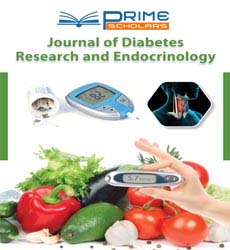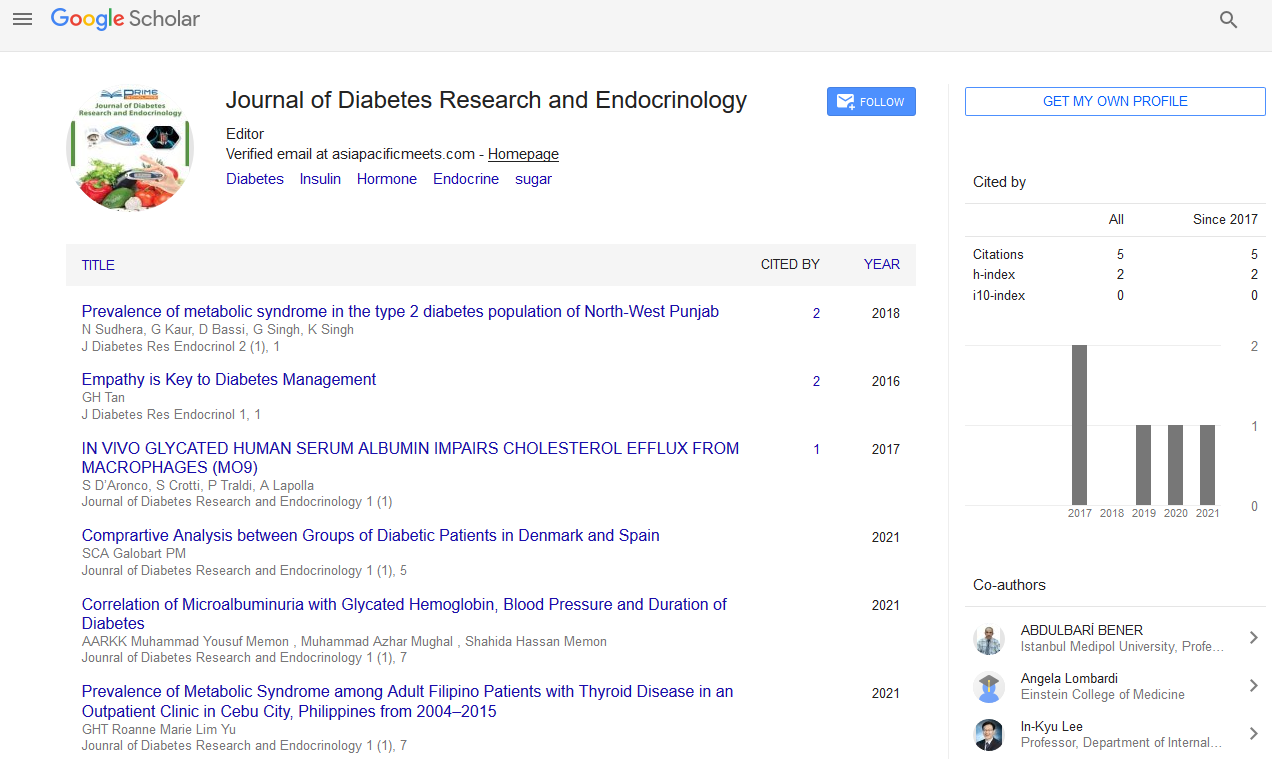Commentary - (2022) Volume 6, Issue 1
A Short Commentary on a Oxidative Stress in Diabetes Mellitu
1Department of Diabetology, University of California, USA
*Correspondence:
John C Chamber, Department of Diabetology, University of California,
USA,
Email:
Received: 03-Jan-2022, Manuscript No. IPJDRE-22-12594;
Editor assigned: 05-Jan-2022, Pre QC No. IPJDRE-22-12594(PQ);
Reviewed: 19-Jan-2022, QC No. IPJDRE-22-12594;
Revised: 24-Jan-2022, Manuscript No. IPJDRE-22-12594(R);
Published:
31-Jan-2022, DOI: 10.36648/09768610.6.1.6.
Description
Diabetes complications has both micro vascular and cardiovascular,
are exacerbated by oxidative stress. Diabetes-related
metabolic changes result in mitochondrial reactive oxygen
species overproduction in endothelial cells of both small and
large vessels, as well as in the myocardium. This increased reactive
oxygen species production activates five major pathways
involved in the pathogenesis of complications: polyol pathway
flux, increased formation of advanced glycation end-products
(AGEs), increased expression of the AGE receptor and its initiating
ligands, activation of protein kinase C (PKC) isoforms,
and hexosamine pathway over activity. Also it inhibits the activity
of two significant antiatherosclerotic enzymes, e NOS and
prostacyclin synthase, Increased intracellular ROS start causing
defective angiogenesis in reaction to ischemia, activate several
pro-inflammatory pathways, and end up causing long-lasting
epigenetic changes that drive persistent expression of proinflammatory
genes after glycaemia is normalized (‘hyperglycemic
memory’). Atherosclerosis and cardiomyopathy are partially
caused by path that leads insulin resistance that also tends
to increase mitochondrial ROS production from free fatty acids
and causes ROS to inactivate anti-atherosclerosis enzymes, Superoxide
dismutase overexpression in transgenic diabetic animals
precludes diabetic retinopathy, nephropathy, and cardiomyopathy.
The purpose of this literature review is to highlight
recent advances in our understand the role of metabolite-generated
ROS in the development of type 2 diabetes complications.
Overall, diabetic micro vascular complications are affected
by exposure to high levels of glucose. The extent of diabetic
tissue injury is also determined by genetic determinants of individual
susceptibility, as well as the presence of independent
accelerating factors such as hyperlipidemia, as with atherosclerosis.
Large-scale prospective studies for both type 1 and type
2 diabetes have defined the importance of hyperglycemia. The vast majority of articles published on the underlying mechanisms
reactive hypoglycemia diabetic vascular damage focus
on five key methods: increased flux of glucose and other sugars
through the polyol pathway, increased intracellular formation
of advanced glycation end-products (AGEs), increased expression
of the receptor for AGEs and its activating ligands, activation
of protein kinase C (PKC) isoforms, and over activity of the
hexosamine pathway. However, medical trials where only one
of these paths is blocked have yielded disappointing results, in
2000; it was proposed that all five mechanisms are activated by
a single upstream event: mitochondrial overproduction of reactive
oxygen species (ROS). The polyol pathway is predicated
on a family of aldo-keto reductase enzymes that can use a wide
range of carbonyl compounds as substrates and decrease them
to their respective sugar alcohols via nicotinic acid adenine dinucleotide
phosphate (NADPH) (polyols). This was originally
believed that the enzyme aldose reductase converts glucose to
sorbitol, which will then be oxidized to fructose by the enzyme
sorbitol dehydrogenase (SDH), with NAD+ as a cofactor, Aldose
reductase is found in a variety of tissues, including nerve, retina,
lens, glomerulus, and vascular cells. Carbohydrate uptake
in many of these tissues is mediated by insulin-independent
GLUTs; thus, intracellular glucose concentrations rise in tandem
with hyperglycemia. A few hypotheses have been put forward
to explain how hyperglycemia-induced increases in polyol
pathway flux could harm the tissues involved.
Acknowledgement
None.
Conflict of Interest
We have no conflict of interests to disclose and the manuscript
has been read and approved by all named authors.
Copyright: This is an open access article distributed under the terms of the Creative Commons Attribution License, which permits unrestricted use, distribution, and reproduction in any medium, provided the original work is properly cited.

